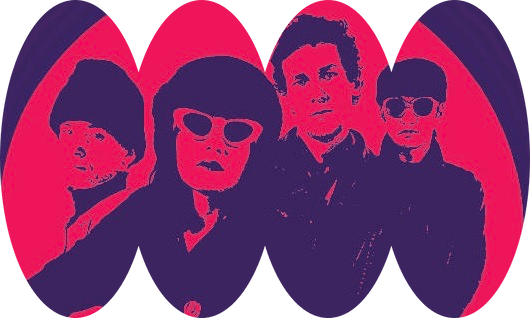Some of the drama and chaos that surrounded Flying Nun legends King Loser was captured on film. The problem? Now the producers need funding to get it ready to release.
They were, according to Cushla Dillon, the real deal. “Their performances were legendary,” the filmmaker says of 90s underground favourites King Loser. Depending on which version of the band showed up on the night, fans could be delighted by an incendiary live gig, or they could watch on in horror as personal spats spilled over on the stage.
“There was something electric and dangerous in their music,” says Dillon, a friend and fan of the “notorious” surf-rock band who managed to release three albums over six years before imploding in 1997. “It would depend on the dynamics going on within the band … You never knew [what] you were gonna get. Sometimes, it would completely fall apart.”
That’s largely thanks to the fiery couple at the centre of the group. Celia Mancini and Chris Heazlewood worked their way through 15 different drummers before settling on a stable line up of Losers that included Lance Strickland and guitarist Sean O’Reilly. “At odds with everyone, including each other,” is how the band’s Audioculture profile describes them. At one point, their record label Flying Nun reportedly banned them from talking to media.
When Mancini and Heazlewood’s relationship ended in the mid-90s, the band kept going. It made things even more intense. “They bought the drama of their passion and their love and their lust at the beginning and then all the drama of their break-up and their jealousy and their friction,” says Dillon. “It continued to imbue both their performances and the music.”
This inherent tension didn’t stop the group from accepting an offer to reunite nearly 20 years later for a six-date tour, including a performance at Flying Nun’s The Others Way festival in 2016. It was then that Mancini asked filmmaker Andrew Moore to document their reunion tour, warts and all.
With cameras rolling – and Mancini’s health failing – the band really fell apart. “Between the shows was tough,” Moore has admitted. “No money, bad food and cramped conditions made for arguments and fighting. I felt bad filming it, but they never said cut, knowing this was just as much the story as the gigs, [which were] some of the best I’d ever seen.”
It sounds like it should be fodder for a great film. When Mancini died in 2017, everyone involved realised they’d documented something that would never happen again. But the film’s first cut, edited by Moore, was rough and ready. “After a year’s editing, I showed the band,” Moore has said. “They were unenthusiastic. Despondent, I shelved the film.”
But Dillon, who’d shot several King Loser music videos back in the 90s and was following progress with interest, saw potential for a different movie to be made – one that focused a little less on the band’s inner turmoil, and more on the creativity and spirit of its frontwoman.
So she offered to edit it. She didn’t realise it would take six years. As the 2010s became the 2020s, throughout periods of Covid lockdowns, Dillon spent her evenings and weekends combing through footage, pairing the old with the new, piecing together what she hoped would become a fitting tribute to her friends and her favourite 90s band.
Dillon says she isn’t being paid for this work. So why do it? “I think you only get one chance to tell a story,” she says. “I could see the arc. Celia … was a blazing star that only comes along every now and then. Another person of her talent would have had a completely different future. When you see the film you’ll see how incredibly talented she is.”
The film starts out about the internal tensions of a warring band, but along the way becomes more about Mancini’s battles with her mental health. Dillon believes this is an important story to tell (and one which Mancini’s family has approved). “It’s total chance as to whether or not that person gets the right help at the right time to survive and thrive in the entertainment industry,” she says.
Right now, the King Loser documentary is finished but its release is stalled. Work needs to be done on sound mixing, grading and promotion to get it into theatres. Producers have refused to apply for funding grants to retain creative control. Instead they’ve started a Givealittle appeal, hoping to raise $25,000 to allow them to apply the finishing touches and release the film they want to release.
And that film, by all accounts, is a doozy. “It’s a story of excess,” says Dillon. “It’s a classic story of rock’n’rollers who took their lifestyle too far, [when] some people survive and some people don’t. There are some scenes that are definitely grimacing … We’re showing the real deal.”
It also includes plenty of live footage from the band’s 2016 reunion tour, with one show in particular recapturing the unpredictable intensity of the King Loser gigs of old. “It was at the King’s Arms, it was the last gig they ever did, and it was extraordinary … everybody talked about that gig,” says Dillon. She wasn’t there that night, but has spent hours marvelling at it in her editing suite. “It was the King Loser magic.”



